Do you know your harvestable rights?
/in News, Resources /by wslcDid you know that the size and location of your property dictates how much water you are permitted to hold in dams?
In our region, rural landholders can capture and store 10% of the average rainfall run-off on their land without a licence. The total allowable capacity of your dams is called the Maximum Harvestable Right Dam Capacity (MHRDC).
To work out your MHRDC, use the calculator available on the WaterNSW website. The calculator will specify the total legal capacity of dams on your property and takes into account rainfall and variations in rainfall pattern and the size of your land. If you are thinking of constructing a new dam, you must factor in the volume of any existing harvestable rights dams on your property.
Approval and licences are required for the construction of dams which exceed your MHRDC.
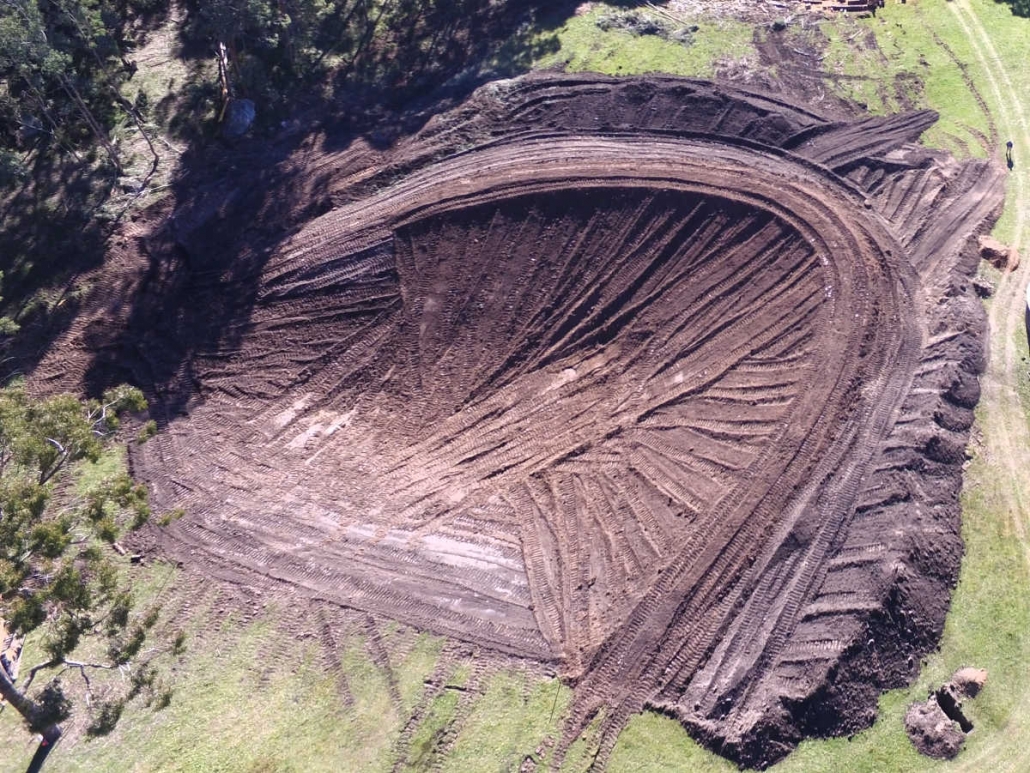
Harvestable right dams can be constructed on first or second-order streams. These are minor watercourses that do not permanently flow, or carry flow from third or higher order streams.
First-order streams do not have any other watercourses flowing into them, they form the top of a catchment. Where two first-order streams meet, they become a second-order stream.
A second-order stream that has other first-order streams flowing into it remains a second-order stream. However, when two second-order streams meet they become a third-order stream.
To identify the stream order on your property you will need to refer to a legislated topographic map.
There are a number of exceptions when calculating your harvestable rights. Dams constructed for the purposes of flood mitigation, soil erosion prevention or control, or containment of drainage or effluent do not contribute towards the total capacity of dams allowed on your property under harvestable rights. Dams without a catchment, such as turkey nest dams used for storage of ground water or water pumped from a river, are also not included.
However, the construction of these dams may still require other approvals and licencing and the use of water held in these structures may be subject to conditions.
More information about water licencing and compliance and the harvestable rights calculator are available on the WaterNSW website: https://www.waternsw.com.au/customer-service/water-licensing.
We have also collated some useful resources on our website: http://watershedlandcare.com.au/resources/water-management.
Wild dog pests in their sights
/in Community, General, News, Resources /by wslcIncreased levels of damage to livestock have meant pest animal groups are targeting wild dogs as a priority across the region.
There are five pest groups within the Watershed Landcare area, these being the Hargraves Hill End Wild Dog Group, Ilford Running Stream Pest Group, Rylstone District Wild Dog Association, Munghorn Wild Dog Group and the newly formed Piambong Yarrabin Pest Group. These groups are volunteer run and strive to support landholders and residents within their areas to manage wild dogs and other pest animals.
The Groups, and the Mudgee LLS, are the first point of call if landholders have seen wild dogs or suspect they are suffering from livestock attack or losses.
“Communication and reporting are vital.” said Peter Sipek, Chairman of the Munghorn Wild Dog Group.
“We all need to know if our neighbours have seen dogs or they are having problems on their place. If we know where they are we can target our control much more effectively.” he continued.
Coordinated, winter 1080 baiting programs are currently being undertaken. “Again, we encourage all landholders to get involved,” said Peter “the greater the area we cover within a baiting program means fewer pockets where dogs can exist, and it takes longer for them to re-establish in the area. Wild dogs are a community problem and we need everybody to get on board.”
The Munghorn Wild Dog Group’s baiting program will be carried out on Thursday the 30 August and follows on from baiting programs recently carried out in the south and east of the region.
Remote cameras are used extensively across the region, providing a valuable tool pre and post baiting. If dogs continue to be seen on these cameras, or mauled livestock are reported after a landholder has been involved in a baiting program, then sending a trapper to the area can also be considered.
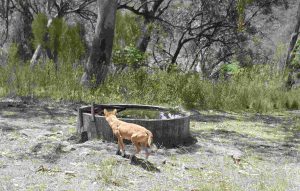
Wild dog detected on a remote camera in the upper Bylong area.
Contact details for the 5 pest groups are:
Hargraves Hill End Wild Dog Group: 0458 733 308
Ilford Running Stream Pest Group: 0427 025 802
Rylstone District Wild Dog Association: 6379 6256
Munghorn Wild Dog Group: 0417 322 436
Piambong Yarrabin Pest Group: 0438 686 369
Watershed Landcare Pest Animal Group Coordinator Beth Greenfield can be contacted for more information on 0438 090 525 or by email beth.greenfield@watershedlandcare.com.au.
Is it still a weed at $70/kg
/in Community, General, News, Projects, Resources /by wslcThe latest trend in top Sydney restaurants is weeds. Farmers friends, purslane, salsify, wild asparagus and nettle are all on the menu and chefs are willing to pay top dollar.
One man is on a mission to connect farmers, landholders and budding foragers from the Central Tablelands to the catering and restaurant industry of Sydney.
After many years working as a foraging educator Diego Bonetto has established Wildfood Store, a marketplace for edible wild food. The platform and registered company will offer farmers and people in regional NSW the opportunity to subsidise their income by harvesting desirable edible wild plants.
“There is an unrelenting request form the city’s fine dining industry for well presented, clean, atypical edible species.” said Diego.
For example young, good quality tips of farmers friends can fetch $7-8 for a 100 g punnet.
“Farmers have edible weeds growing all over so it is just a matter to train people how to harvest and package and get the produce to the city.” he continued.
Diego has secured some seed funding from the NSW Government via an initiative in collaboration with the Kandos School Of Cultural Adaptation.
The concept is simple. Chefs in the city want clean, well-presented and fresh wild edibles. Diego will train farmers on how to harvest and package the produce and via a distribution company in the city deliver them to the top restaurants in Sydney. The farmers get paid for their efforts and Diego will bring their stories to the city’s tables.
Diego will be running a Foragers Training Workshop in Kandos on Saturday, 11 August from 10am-12:30 pm.
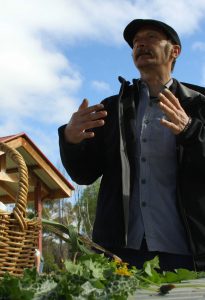
Diego Bonneto will provide training on how to harvest and package desirable wild plants and get the produce to the city.
Diego Bonetto is an Italian artist, father, forager, speaker, keen naturalist and award winning cultural worker based in Sydney. Diego works with chefs, scientists, architects, academics, herbalists, brewers, soap makers, producers, educators and land owners, providing programs, workshops, tours, community engagement strategies and exhibitions. You can read more about Diego on his website: http://www.diegobonetto.com.
Attendance to the workshop is $10, visit https://www.diegobonetto.com/shop/mid-western-foragers-training-aug11 to book your spot.
Can’t make the workshop? Diego will also be available to conduct consultation visits to local properties to identify wild food produce potential during the week of August 6 to 10. Contact Diego on 0411 293 178 or info@diegobonetto.com for more information.
Artful way to capture the right attention
/in Community, General, News, Projects, Resources /by wslcAs consumers become increasingly interested in where and how their food and fibre are produced, more and more farmers and producers are turning to direct marketing to sell their wares. But how do you tell your story in the right way to the right people?
Join us for a ‘Visual Storytelling – the art of capturing the right attention’ workshop on Sunday, 1 July and learn how you can use social media to convert your customers into a community.
Watershed Landcare have invited Sophie Hansen, founder and creator of Local is Lovely and My Open Kitchen and 2016 National Rural Woman of the Year, and Annie Herron, painter, sculptor and art teacher who has taught art to all ages for over 40 years and has been exhibiting for 30 years, to present the workshop.
Social media is a visual medium and so great photos are an important part of your storytelling. In this three-hour workshop we will run through how to compose, capture, caption and share images that tell your story in the most engaging way possible.
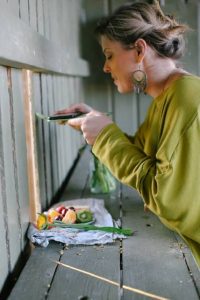
Creative Afternoon: 2016 National Rural Woman of the Year, Sophie Hansen, will present the Visual Storytelling workshop.
We will cover the basics of composing engaging images, how to shoot them on your smartphone (or camera if you prefer) and how to edit them so they really pop.
Then we’ll move on to the words – how to write and edit captions that tell a story, that engage and motivate your customers so they become community members and your biggest advocates.
This will be a lovely afternoon of creativity, strategy and figuring out how to tell your story in the right way to the right people.
The Visual Storytelling workshop will be held from 12 noon to 4pm on Sunday, 1 July at Augustine Function Centre, 50 George Campbell Drive, Mudgee. All welcome, the workshop is free to attend with lunch provided but please RSVP by Tuesday, 26 June as numbers are strictly limited.
For more information or to RSVP contact Watershed Landcare Coordinator, Claudia Wythes, on 0412 011 064 or email: claudia.wythes@watershedlandcare.com.au.
This event is supported by Watershed Landcare through funding from the Central Tablelands LLS from NSW Catchment Action and the Australian Government’s National Landcare Programme and is a part of the NSW Government’s Local Landcare Coordinators Initiative, supported through the partnership of Local Land Services and Landcare NSW.
Growing your own natives
/in Community, General, News, Projects, Resources /by wslcEver wanted to grow your own native plants? Do you know how to tell a healthy, viable seed from an unhealthy one, when is the best time to sow, and how to give your newly emerged seedlings the best conditions to ensure success?
Watershed Landcare will be hosting a seed collection and propagation workshop on Sunday 6 May and have invited local ecologist, David Allworth, and local botanist, Christine McRae, to share their extensive knowledge on the subject.
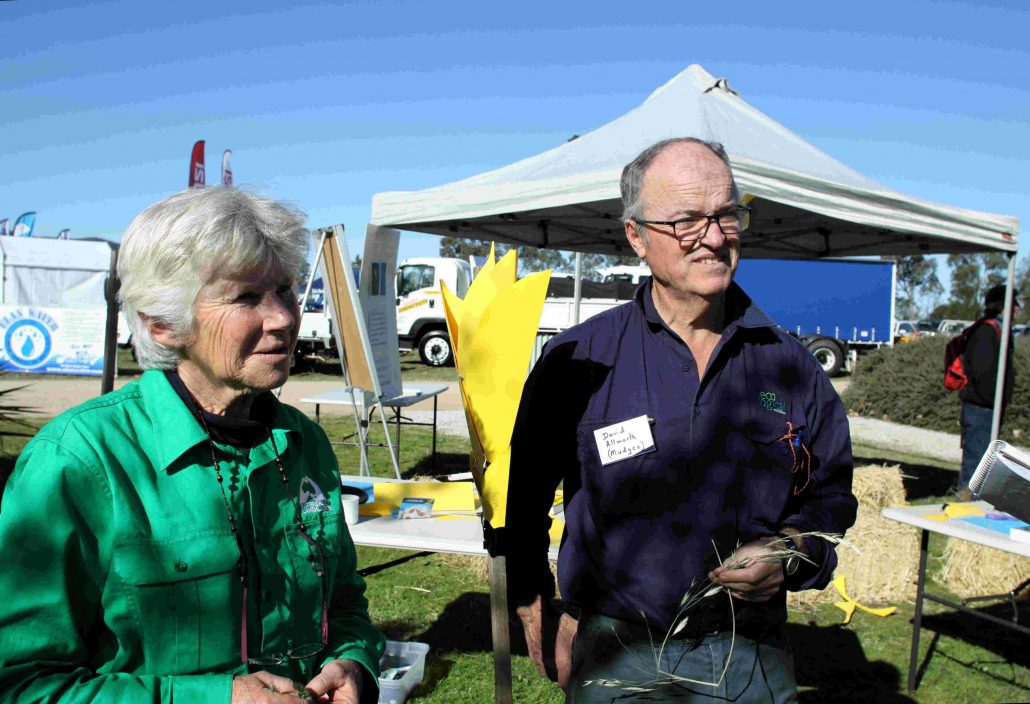
“Collecting your own seed and growing the plants yourself for either re-vegetation projects, farm windbreaks and shade trees, or the home garden can be extremely satisfying. The ultimate DIY project that will outlast a lifetime.” said Ms McRae.
“The purchase of seed to grow native plants is relatively low cost. However, collecting your own seed from close proximity to where it will be used can add to the survival rate of the plants.” she continued.
The reason for this is that local plants are more suited to the local environment. They would have evolved over time to cope with environmental variables such as rainfall patterns, frosts, winter and summer extremes, soil types and landscape position. Provenance is a term meant to describe the origin of a seed source. Local provenance equates to genetic adaptation to local environmental conditions.
“Another good reason to collect your own seeds is that there are many native plant species out there and commercial suppliers will not be able to supply everything when required, if at all. Growing your own local native species is the best way to aid their survival.” said Ms McRae.
The workshop will cover basic identification features of some commonly found local plant species; why collecting locally is best; safety, permission, timing, methods, storing collected material; equipment and processing of collected material; methods and materials for propagation and the best time to sow seed.
Workshop participants with gain knowledge and skills to select for viable seed, ensure successful germination and give seedlings the best start.
The seed collection and propagation workshop will be held from 9am to 12 noon on Sunday 6 May at the Straw Bale Shed, AREC. The workshop is free to attend with morning tea and lunch provided.
All welcome. For more information or to book your spot please contact Agness Knapik, Watershed Landcare Coordinator, on 0435 055 493 or info@watershedlandcare.com.au.
This event is supported by Watershed Landcare through funding from Michael King and Landcare Australia.
Helping to tackle Serrated Tussock
/in Community, General, News, Projects, Resources /by wslcAs part of the Nasty Nassella Serrated Tussock project, which is working on a new approach to serrated tussock, Watershed Landcare is inviting local landholders to a workshop to help them get the upper hand on this weed of national significance.
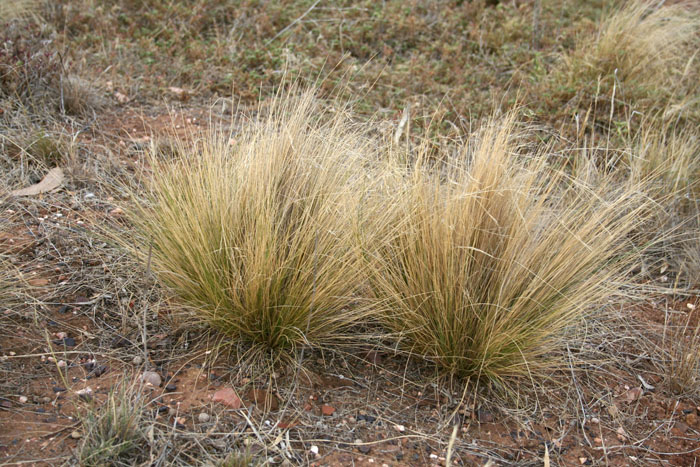
Serrated tussock
Watershed Landcare has partnered with Central Tablelands Local Land Services (CT LLS) and Mid-Western Regional Council (MWRC) to deliver the Nasty Nasella Workshop on Monday, 5 March.
The workshop will feature presentations from Clare Edwards, CTLLS Senior Land Services Officer (Pastures), who will discuss proactive whole-farm strategies to manage serrated tussock; Aaron Simmons, NSW Department of Primary Industries, will speak about the practicalities of serrated tussock management strategies from his perspective as a landholder and researcher; Matt Anderton, MWRC, will discuss landholder responsibilities and the new biosecurity legislation.
The Nasty Nasella workshop will be held from 9am-12:30pm, 5 March at The Stables, Market Street, Mudgee. This event is free to attend with lunch provided, but please RSVP to assist with catering by Friday, 2 March.
The Nasty Nassella Serrated Tussock project is also looking for farmers interested in developing a serrated tussock management plan for their farm.
“The project is capturing and building on the knowledge of experienced landholders as well as supporting those who have had limited experience with serrated tussock,” said Watershed Landcare Coordinator, Claudia Wythes.
“Rather than focusing only on chemical control, this project will deliver a broad range of practical management options that cater to landholders with different experience levels in dealing with the problem.”
“Pasture species, alternative control strategies and the scale of the problem all need to be considered,” she continued.
“Whether you are actively managing serrated tussock on your property, you have just spotted a few isolated plants, or you would like some help with identification, we want to hear from you,” said Ms Wythes.
To RSVP to the workshop or for more information about the Nasty Nassella project, contact Watershed Landcare Coordinator Claudia Wythes on 0412 011 064 or email: claudia.wythes@watershedlandcare.com.au.
This project is supported by Watershed Landcare through funding from the Central Tablelands LLS from NSW Catchment Action and the Australian Government’s National Landcare Programme and is a part of the NSW Government’s Local Landcare Coordinators Initiative, supported through the partnership of Local Land Services and Landcare NSW.
Improve your land
/in Community, General, News, Projects, Resources /by wslcDo you want to increase productivity, reduce operating costs and improve the land value of your farm?
Landholders can achieve all this by encouraging native vegetation on their farms:
- Farms with shade trees and shelter belts are more aesthetically appealing and attract a premium over average land values. A survey conducted in the Central West indicated that farms with good quality native vegetation have a 15% increase on capital value compared to those without.
- Crop and pasture productivity is increased by remnant native vegetation and established shelter belts. Native trees and shrubs provide habitat for birds, lizards and bats, the natural enemies of pasture pests.
- Pastures and crops with some tree cover experience less soil moisture loss than those exposed to the full force of the wind.
- Cold and heat stress in livestock can significantly reduce farm income by reducing stock fertility, weight gain, wool growth, milk production, and increasing the mortality rate of calves and lambs and the susceptibility of stock to disease.
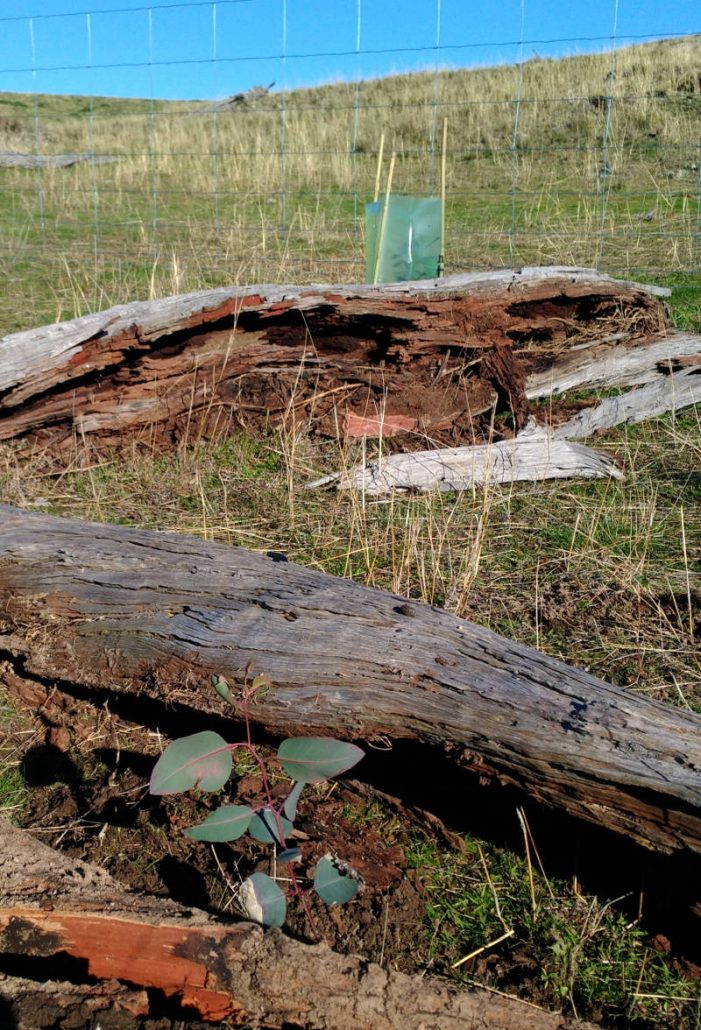
Paddock Trees Project: Providing funding to landholders to enhance and protect farm vegetation. Individual landholders able to apply for up to $2,750 in funding.
Scattered paddock trees also serve an important function for native wildlife, providing a food source and nesting sites. They also act as stepping stones for animal movement between other patches of vegetation and water sources.
Many existing mature trees on agricultural land in temperate Australia are in decline. This is not isolated to paddock trees, mature trees in larger stands of vegetation are also disappearing, but often the effects are more pronounced in isolated trees.
There are a number of things landholders can do to help protect paddock trees and help their regeneration. Fencing around selected trees will help to protect them from stock and limit detrimental agricultural practices such as applying fertilizer in the root zone and reducing herbicide spray drift. Planting additional shade trees for stock can also take the pressure off the old giants.
Watershed Landcare is currently running a Paddock Trees project which aims to enhance areas of highly cleared ecosystems in the Central Tablelands Local Land Services region by increasing the extent of paddock trees and clusters.
We are seeking expressions of interest for funding from landholders in our region to conduct on-ground works to improve linkages between remnant native vegetation on the land they mange. Funding is available for materials or labour for protection of existing remnant vegetation and/or new plantings.
The project is supported by Watershed Landcare and Central Tablelands LLS through funding from the Australian Government. Total funding of $16,500 is available, with individual landholders able to apply for up to $2,750 in funding.
For further details visit our website.
Applications close 23 February 2018. Please contact Agness Knapik, Watershed Landcare Coordinator on 0435 055 493 or info@watershedlandcare.com.au for further information or to discuss your project idea.
